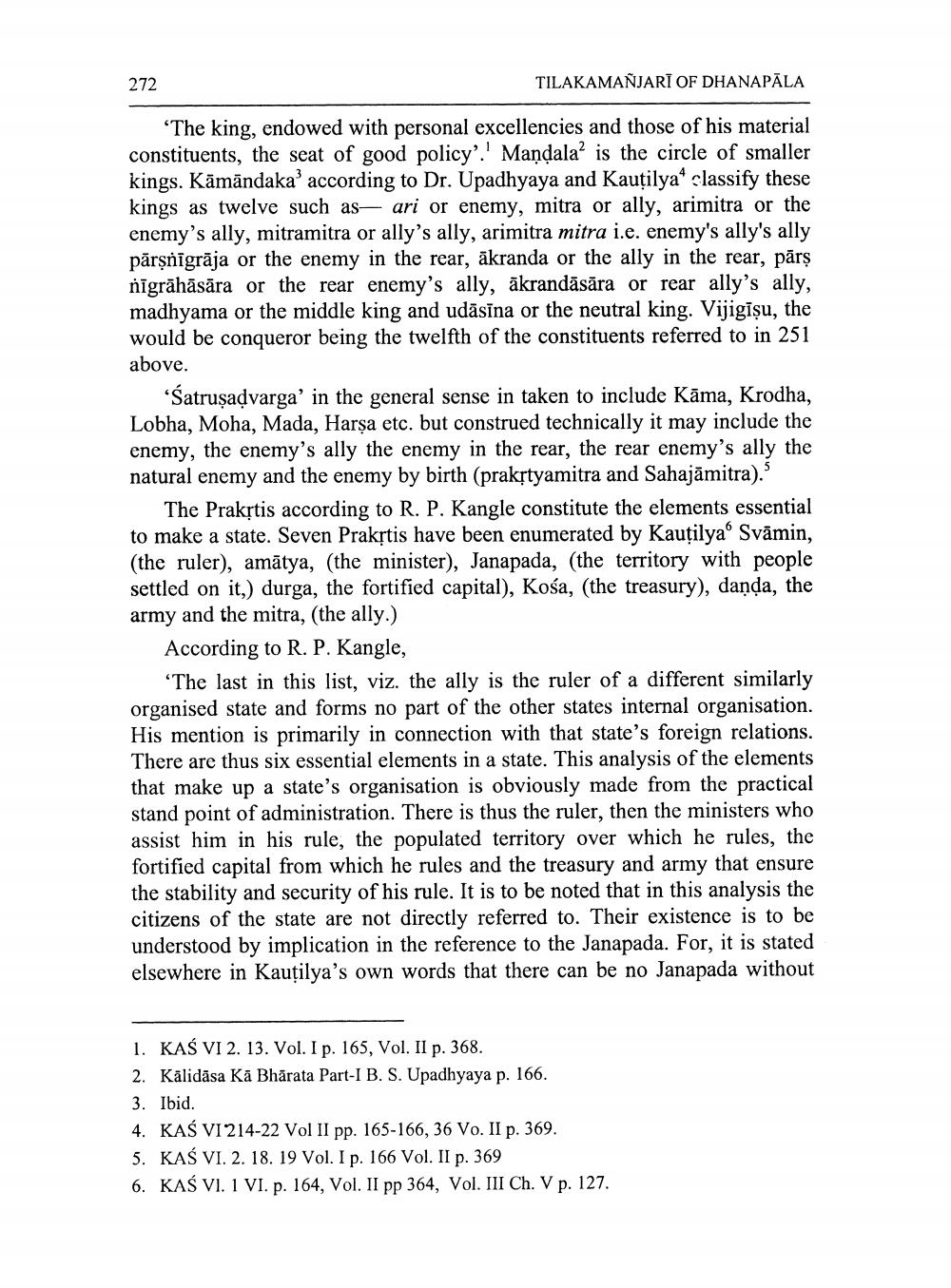________________
272
TILAKAMAÑARI OF DHANAPĀLA
'The king, endowed with personal excellencies and those of his material constituents, the seat of good policy'.' Mandala? is the circle of smaller kings. Kāmāndaka' according to Dr. Upadhyaya and Kautilya* classify these kings as twelve such as- ari or enemy, mitra or ally, arimitra or the enemy's ally, mitramitra or ally's ally, arimitra mitra i.e. enemy's ally's ally pārsnīgrāja or the enemy in the rear, ākranda or the ally in the rear, pārs nīgrāhāsāra or the rear enemy's ally, ākrandāsāra or rear ally's ally, madhyama or the middle king and udāsīna or the neutral king. Vijigīşu, the would be conqueror being the twelfth of the constituents referred to in 251 above.
“Satruşadvarga' in the general sense in taken to include Kāma, Krodha, Lobha, Moha, Mada, Harsa etc. but construed technically it may include the enemy, the enemy's ally the enemy in the rear, the rear enemy's ally the natural enemy and the enemy by birth (prakstyamitra and Sahajāmitra).'
The Prakrtis according to R. P. Kangle constitute the elements essential to make a state. Seven Praktis have been enumerated by Kautilya Svāmin, (the ruler), amātya, (the minister), Janapada, (the territory with people settled on it) durga, the fortified capital), Kośa, (the treasury), danda, the army and the mitra, (the ally.)
According to R. P. Kangle,
"The last in this list, viz. the ally is the ruler of a different similarly organised state and forms no part of the other states internal organisation. His mention is primarily in connection with that state's foreign relations. There are thus six essential elements in a state. This analysis of the elements that make up a state's organisation is obviously made from the practical stand point of administration. There is thus the ruler, then the ministers who assist him in his rule, the populated territory over which he rules, the fortified capital from which he rules and the treasury and army that ensure the stability and security of his rule. It is to be noted that in this analysis the citizens of the state are not directly referred to. Their existence is to be understood by implication in the reference to the Janapada. For, it is stated elsewhere in Kautilya's own words that there can be no Janapada without
1. KAŚ VI 2. 13. Vol. I p. 165, Vol. II p. 368. 2. Kalidasa Ka Bhārata Part-I B. S. Upadhyaya p. 166. 3. Ibid. 4. KAŚ VI 214-22 Vol II pp. 165-166, 36 Vo. II p. 369. 5. KAS VI. 2. 18. 19 Vol. I p. 166 Vol. II p. 369 6. KAŚ VI. 1 VI. p. 164, Vol. II pp 364, Vol. III Ch. V p. 127.




